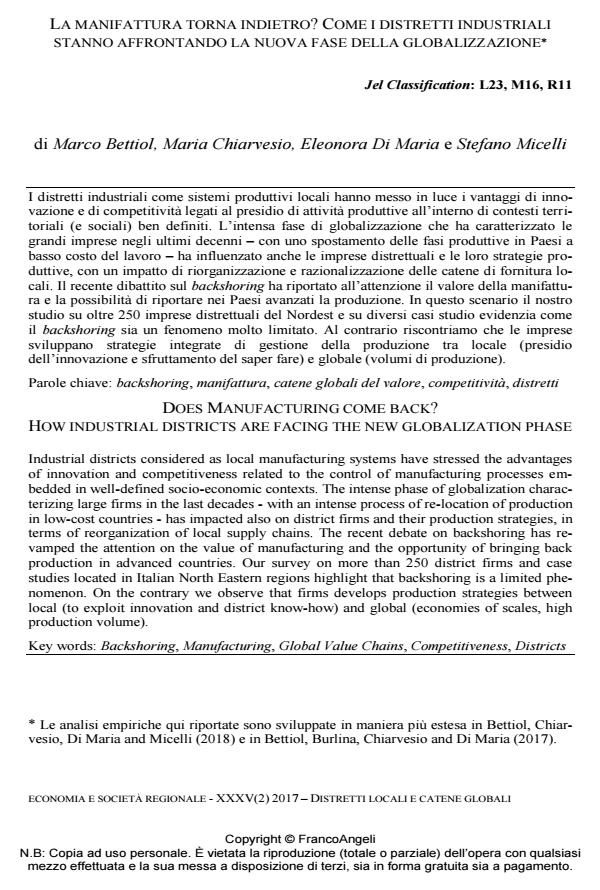Does manufacturing come back? How industrial districts are facing the new globalization phase
Journal title ECONOMIA E SOCIETÀ REGIONALE
Author/s Marco Bettiol, Maria Chiarvesio, Eleonora Di Maria, Stefano Micelli
Publishing Year 2017 Issue 2017/2
Language Italian Pages 10 P. 55-64 File size 272 KB
DOI 10.3280/ES2017-002005
DOI is like a bar code for intellectual property: to have more infomation
click here
Below, you can see the article first page
If you want to buy this article in PDF format, you can do it, following the instructions to buy download credits

FrancoAngeli is member of Publishers International Linking Association, Inc (PILA), a not-for-profit association which run the CrossRef service enabling links to and from online scholarly content.
Industrial districts considered as local manufacturing systems have stressed the advantages of innovation and competitiveness related to the control of manufacturing processes embedded in well-defined socio-economic contexts. The intense phase of globalization characterizing large firms in the last decades - with an intense process of re-location of production in low-cost countries - has impacted also on district firms and their production strategies, in terms of reorganization of local supply chains. The recent debate on backshoring has revamped the attention on the value of manufacturing and the opportunity of bringing back production in advanced countries. Our survey on more than 250 district firms and case studies located in Italian North Eastern regions highlight that backshoring is a limited phenomenon. On the contrary we observe that firms develops production strategies between local (to exploit innovation and district know-how) and global (economies of scales, high production volume).
Keywords: Backshoring, Manufacturing, Global Value Chains, Competitiveness, Districts
Jel codes: L23, M16, R11
- Small businesses in the global market: evidence from the fashion system of Vicenza province (Italy) David Celetti, in R-Economy /2020 pp.74
DOI: 10.15826/recon.2020.6.2.007
Marco Bettiol, Maria Chiarvesio, Eleonora Di Maria, Stefano Micelli, La manifattura torna indietro? Come i distretti industriali stanno affrontando la nuova fase della globalizzazione in "ECONOMIA E SOCIETÀ REGIONALE " 2/2017, pp 55-64, DOI: 10.3280/ES2017-002005